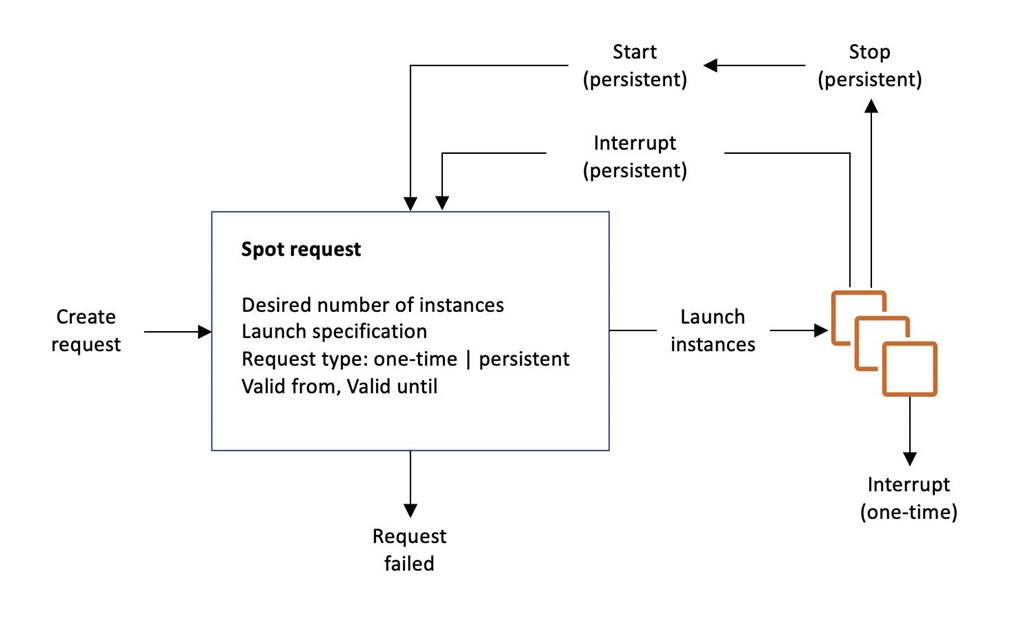- All Exams Instant Download
In this scenario, which type of Amazon EC2 instance is the most cost-effective type to use?
The media company that you are working for has a video transcoding application running on Amazon
EC2. Each EC2 instance polls a queue to find out which video should be transcoded, and then runs a transcoding process. If this process is interrupted, the video will be transcoded by another instance based on the queuing system. This application has a large backlog of videos which need to be transcoded. Your manager would like to reduce this backlog by adding more EC2 instances, however, these instances are only needed until the backlog is reduced.
In this scenario, which type of Amazon EC2 instance is the most cost-effective type to use?
A . Spot instances
B . Reserved instances
C . Dedicated instances
D . On-demand instances
Answer: A
Explanation:
You require an instance that will be used not as a primary server but as a spare compute resource to augment the transcoding process of your application. These instances should also be terminated once the backlog has been significantly reduced. In addition, the scenario mentions that if the current process is interrupted, the video can be transcoded by another instance based on the queuing system. This means that the application can gracefully handle an unexpected termination of an EC2 instance, like in the event of a Spot instance termination when the Spot price is greater than your set maximum price. Hence, an Amazon EC2 Spot instance is the best and cost-effective option for this scenario.

Amazon EC2 Spot instances are spare compute capacity in the AWS cloud available to you at steep discounts compared to On-Demand prices. EC2 Spot enables you to optimize your costs on the AWS cloud and scale your application’s throughput up to 10X for the same budget. By simply selecting Spot when launching EC2 instances, you can save up-to 90% on On-Demand prices. The only difference between On-Demand instances and Spot Instances is that Spot instances can be interrupted by EC2 with two minutes of notification when the EC2 needs the capacity back.
You can specify whether Amazon EC2 should hibernate, stop, or terminate Spot Instances when they are interrupted. You can choose the interruption behavior that meets your needs.
Take note that there is no "bid price" anymore for Spot EC2 instances since March 2018. You simply have to set your maximum price instead.
Reserved instances and Dedicated instances are incorrect as both do not act as spare compute
capacity.
On-demand instances is a valid option but a Spot instance is much cheaper than On-Demand.
References:
https://docs.aws.amazon.com/AWSEC2/latest/UserGuide/spot-interruptions.html
http://docs.aws.amazon.com/AWSEC2/latest/UserGuide/how-spot-instances-work.html
https://aws.amazon.com/blogs/compute/new-amazon-ec2-spot-pricing
Check out this Amazon EC2 Cheat Sheet:
https://tutorialsdojo.com/amazon-elastic-compute-cloud-amazon-ec2/
Latest SAA-C03 Dumps Valid Version with 400 Q&As
Latest And Valid Q&A | Instant Download | Once Fail, Full Refund
Subscribe
Login
0 Comments
Inline Feedbacks
View all comments

